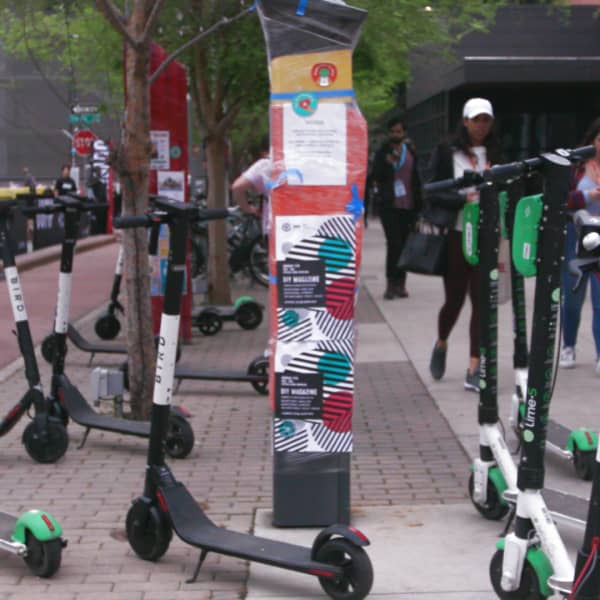Though South By Southwest is famous for being a launchpad for social networks like Twitter and Foursquare, physical products are in the spotlight this year.
"I have seen more gadgets at this conference than I think I have sen in any other prior year," said Andreessen Horowitz partner Scott Weiss. "It feels like this is going to be the year of gadget."
One gadget grabbing headlines isn't even going to go on sale: a Google-modified Adidas sneaker that talks.
On Saturday, Google showcased an experiment with its platform called "Art, Copy, and Code." And the talking shoe is called "An Experiment in Connected Objects," part of a series of experiments to re-imagine advertising. Google stresses that it's not prototyping a talking shoe or planning to put one on sale, but they certainly captured the attention of SXSW attendees.
It's like having your own trash-talking personal trainer in your shoe. The sneakers are connected to an accelerometer, gyroscope and pressure center linked to a smart phone app and a speaker. And they're engineered to respond to your actions with a certain level of snark. In the Google video the shoe says "Are you a statue? Let's do this already."
(Read More: Crowds Expected to Flood South by Southwest)
Google's shoe may not be for sale, but some other wearable gadgets here at SXSW are already on the market, like the Memoto "life blogging" camera. The inch-square camera clips to a shirt or jacket and takes a photo every 30 seconds. It connects to an app that filters and organizes the photos into a digital flip book of sorts. Memoto CEO Martin Kallstrom says he's sold 3,000 already, and expects the camera to have wide appeal, from everyone from families looking to document a kid's birthday party, to people with memory problems.
Another gadget drawing huge buzz here is the Leap Motion Controller. The $80 device, which looks like a tiny black iPhone, plugs into a computer and can sense users' fingers in the space over the sensor. Backed by VC Andreessen Horowitz, it is similar to Microsoft's XBox Kinect technology, but is much more sensitive to fine motor movement. CEO Michael Buckland says "this is fundamentally a better way to interact with a computer." Though the technology already works with games and certain web browsing, the technology platform is open to developers, so Buckland hopes it will find many new uses.
(Read More: Twitter Is Worth $8.6 Billion: Hamadeh)
Why is there such a surge in gadgets? It's partly thanks to the rise of 3-D printing from companies like MakerBot, which sells a 3-D printer for as little as $2,000. Memoto was able to create a low-cost prototype because it worked with a 3-D printer and wasn't reliant on outside companies. Another factor is the rise of crowd-funding, which is enabling entrepreneurs with outside-the-box ideas to raise money without relying on traditional VCs.
Kleiner Perkins partner Bing Gordon credits the rise of gadgets in part to inspiration from Steve Jobs game-changing Apple devices. Gordon described the shift from apps to products as "atoms making a comeback," saying cool technology can be more engaging—and have longer staying power—than an app if it can really take off.




